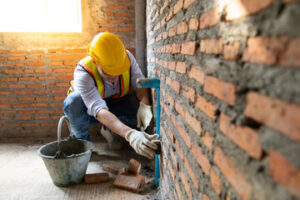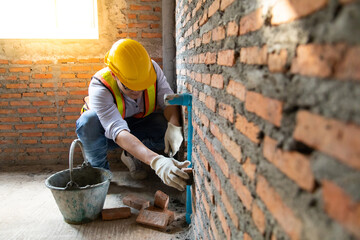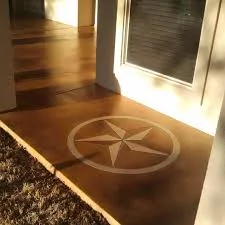Colorado Springs Masonry are construction methods that use bricks, concrete blocks, and natural or man-made stone to build fences and walkways. It is a skill that requires training and experience to master.
Most masonry work is best left to professionals. However, there are a number of tasks that a DIYer can undertake.
Masonry has long been valued for its aesthetic appeal, color, scale, texture, and the look of permanence it imparts to buildings. It also has value in controlling sound and resisting fire. It is very insulating against daily fluctuations in temperature. In modern construction, it is often used over wood-stud walls to add strength and reduce construction costs.
Depending on the nature of the project, masonry can be constructed using a variety of different materials. The most popular and durable is brick, although stone and concrete blocks are also used. The choice of material depends on economic factors and the structural requirements of the building.
A key component of any masonry wall is mortar, which acts like glue to hold the masonry units together in a strong bond. Mortar is a mixture of binding material and water. Binding materials include clay, sand, rock fragments or other aggregates, and cement. The strength of a mortar depends on its binding material and the binding material’s water retentiveness. During warm and dry weather, a higher retentivity allows the mortar to withstand the evaporation of moisture before it hardens, while in cold winter conditions, a lower retentivity facilitates water loss from the mortar before it freezes.
The mortar must be capable of adhering the masonry units to each other and to the wall itself, but it should not be so stiff that it becomes difficult to work with or spread. Normally, a mortar mix is prepared on a board that can be placed on the ground and worked with a trowel. A masonry wall requires reinforcement at regular intervals, and the size of the reinforcement and the spacing between reinforcing bars are determined by the structural requirements of the building.
Masonry units can be made with natural stone (igneous, sedimentary, or metamorphic), bricks, concrete blocks, or other manufactured masonry units such as hollow clay brick. Cement-lime mortars have a high tensile strength but a low compression strength, so they tend to crack easily, and the construction of a solid masonry wall requires careful planning and a thorough understanding of movement control, especially at the lintels where loads can be transmitted to the foundation.
Tools
Masonry tools are a key component of the work of a mason, and there are several different types that can be used for various projects. These tools may vary in their purpose, but they all have a common design that makes them efficient for use. For example, a trowel is an essential tool that is used to lift and spread mortar on a construction site. Trowels come in a variety of sizes and shapes, but the most common type is a basic V-trowel with two straight sides and a notched side to allow for dispensing mortar on flat surfaces at an even rate. Another trowel that is frequently used by masons is the margin trowel, which is thinner and more specific to the application of mortar on stone veneers.
There are also a number of different types of chisels that masons can use. These tools are usually made from chrome-vanadium steel and have walnut wooden handles, which make them comfortable to hold. These chisels are precision-sharpened and have a durable coating to ensure long use. Other masonry tools include a brick hammer, which is similar to a carpenter’s hammer but has a square head on one end and a chisel-shaped blade on the other. It is often used to cut bricks and stones, and it can also be used for chipping away excess mortar.
Other important masonry tools include a level and a plumb bob. A level is a flat plastic or wood piece with equally spaced markings along it that is used to check if a surface is even. A plumb bob is a small weight with a hollow tube at the bottom that has an air bubble inside of it, and this is placed on the surface to see if the surface is above or below a vertical reference line.
Lastly, masons need to wear proper safety gear. This includes a hard hat and safety goggles. A hard hat is a protective helmet that helps prevent injuries from falling debris and can shield the eyes, ears, and face from flying shards of cement or concrete. Safety goggles are important to protect the eyes from dust and other particles that can fly off of a project as it’s being constructed.
Techniques
Masonry requires a high degree of skill and expertise since stones must be precisely placed to ensure a stable and strong building. It can be used to construct both weight-bearing walls and decorative facades, and it is often seen in buildings such as cathedrals, castles, and other architectural landmarks. Using bricks, stone, concrete blocks, and mortar, masonry can be used to build both commercial and residential structures.
Masons typically learn through apprenticeships with more experienced masons. They are taught the tools of the trade, such as how to use hand-held hammers and mallets, chisels, gouges, and axes, and how to assess rocks for their suitability for a project. They also learn the basic principles of physics and engineering, which are important for the proper construction and assembly of masonry projects.
A mason’s work is judged by his or her choice of materials, the pattern in which they are assembled, and the quality of workmanship. A well-executed masonry job will be free of mistakes and flaws, and it should look beautiful. Masonry can be constructed in a wide variety of styles, from the rustic to the pristinely clean.
The most common type of masonry uses concrete blocks made from a combination of cement, sand, and aggregates. This type of masonry is commonly found in commercial buildings and residential homes, and it can be used to construct walls, basements, and sidewalks. Other types of masonry include natural stone, clay, and glass block masonry.
While strict construction tolerances are important for the appearance and durability of masonry, sometimes it is necessary to deviate from the original plans or specifications. Masons may need to vary the thickness of head or bed joints, for example, if they are working on an existing structure. They may also need to accommodate changes in the size or shape of the lintels.
While there are many techniques for assembling bricks, stones, and concrete blocks, some are more effective than others. For instance, the use of a plasticizer in the mortar can help reduce cracking and shrinkage. In addition, the use of precast concrete and prestressed reinforcement can improve the strength of a masonry wall. These methods are also useful in reducing construction costs and increasing the speed of installation.
Safety
Masonry involves a lot of manual labor, and there is always a chance that an injury or illness may occur. However, masonry contractors can minimize risks by taking a series of recommended safety precautions during on-site work.
Among the most important safeguards masons take is wearing appropriate personal protective equipment. This includes hard hats and footwear. These protect against the potential for falling bricks and other debris, as well as electrical shocks. Regular inspections should also be conducted to ensure that these pieces of equipment are in good condition and aren’t showing any signs of wear and tear.
Another crucial safety measure involves establishing and following hazard control guidelines for the handling of masonry materials. This is especially true when working on high-rise buildings. For example, steel floor plates and double-seated vertical support scaffolding are vital for ensuring workers’ safety when constructing walls.
It is also important to follow the appropriate safety procedures when drilling into masonry. This is because the dust produced by drilling can cause skin irritation and rashes. To avoid this, it is a good idea to use a drill with a dust extraction kit and to wear gloves and long sleeves when working.
In addition, masonry contractors should take steps to keep their workspaces clean. The dust from masonry can cause a range of health problems, including respiratory illnesses. For this reason, it is a good idea to wear masks and regularly wipe surfaces down with cleaning solutions.
Aside from protecting masonry employees’ health, safety measures can also help protect the company’s bottom line. For example, the cost of workers’ compensation claims can be reduced when a company takes the necessary precautions. It is also important to make sure that all employees are properly trained and equipped to handle the specialized construction techniques required by masons.
Masonry is an excellent choice for building commercial and residential structures because of its strength, durability, and attractiveness. It also offers fire safety benefits that other building materials cannot match. It is an ideal building material for high-rise structures because it resists flames much better than other types of building materials, which can lead to significant structural damage and loss of life.


